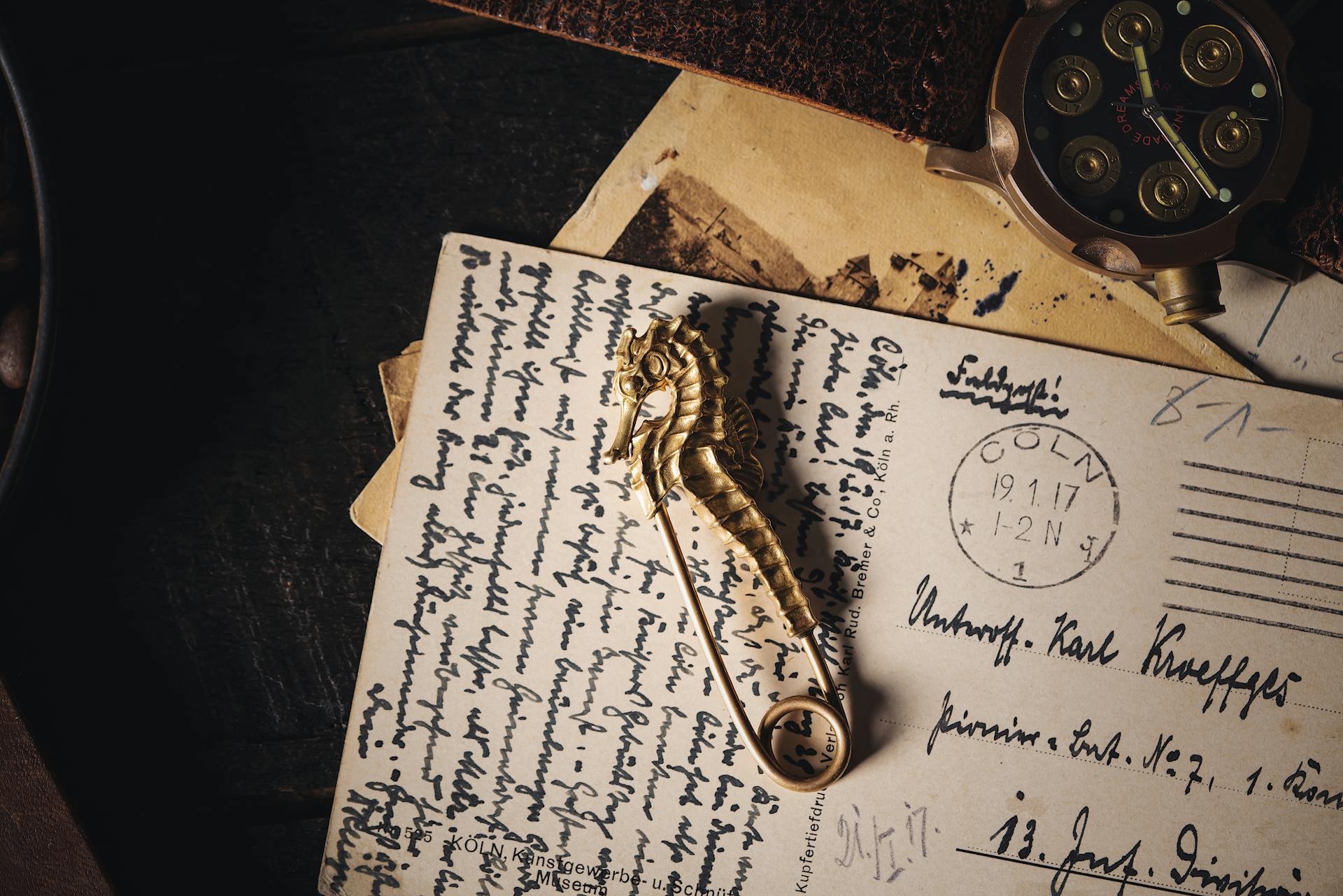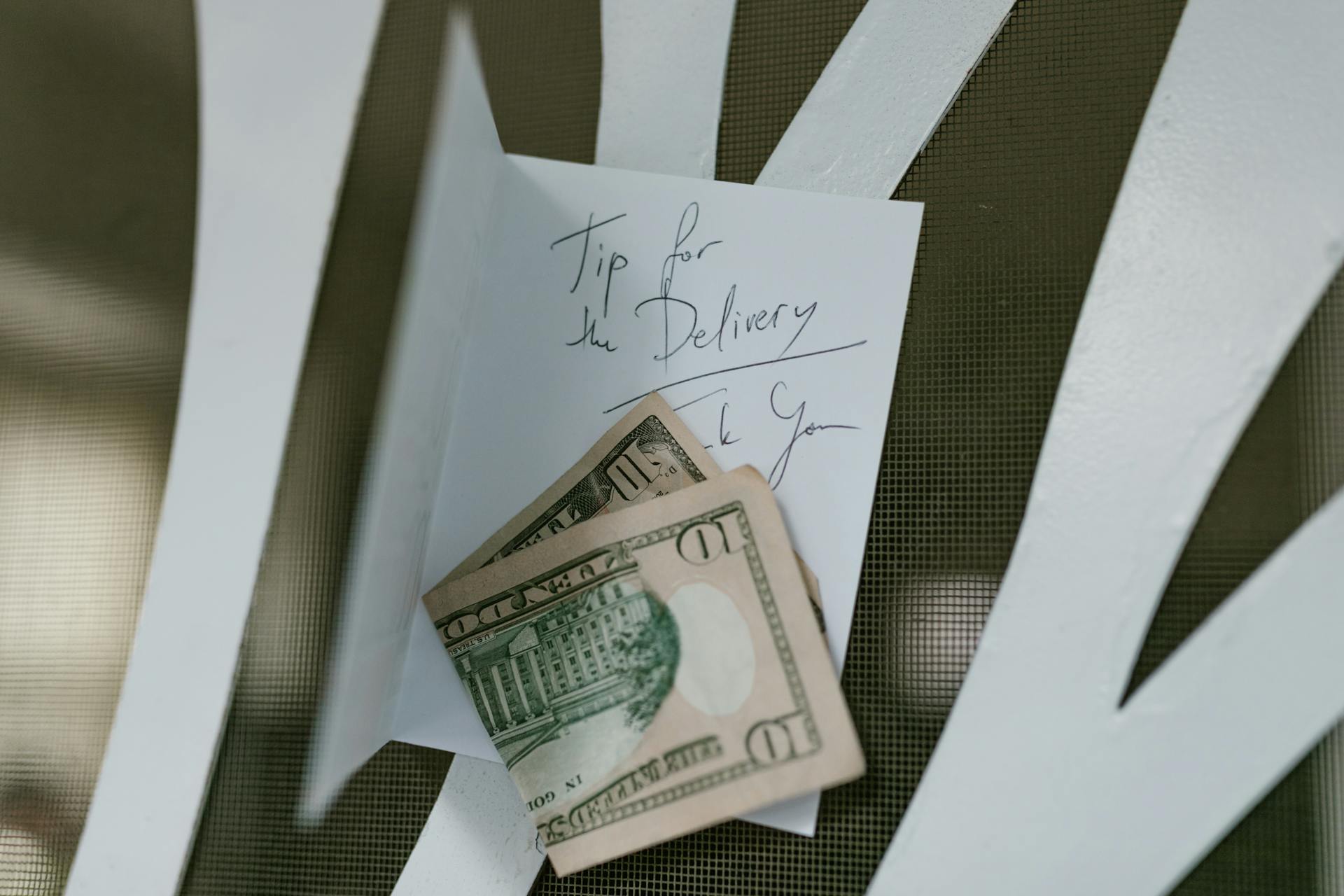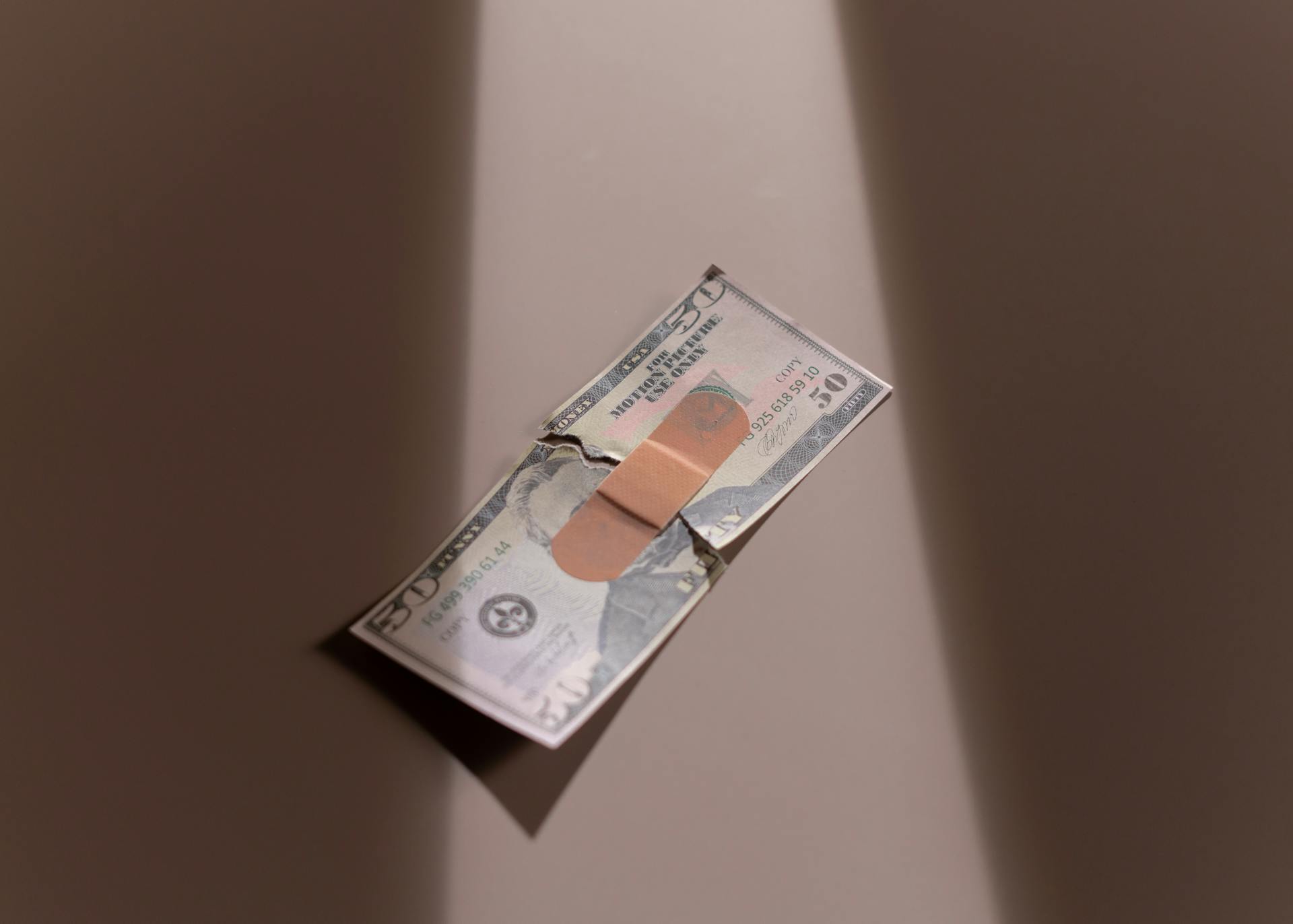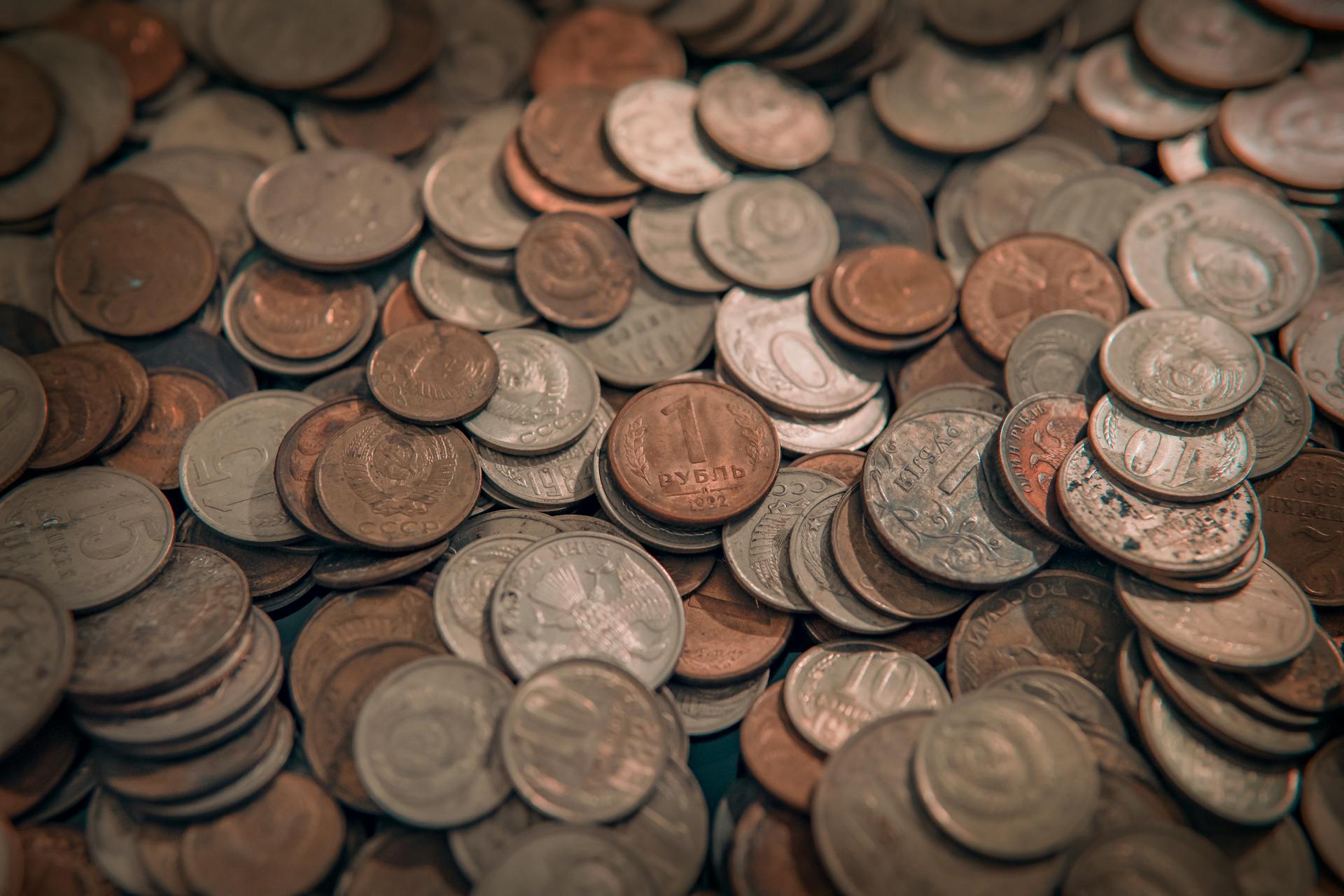
When writing a payment collection letter, it's essential to follow best practices to increase the chances of getting paid. A clear and concise letter can make all the difference.
Use a formal business tone and include the debtor's name, account number, and a clear statement of the outstanding balance. This information should be prominently displayed on the first page of the letter.
The letter should also include a clear deadline for payment, specifying the date by which the debt must be paid. Failing to include a deadline can lead to confusion and prolonged debt recovery.
Keep the language polite and professional, avoiding aggressive or threatening language that can escalate the situation.
Payment Collection Letter Basics
A payment collection letter is a formal notice to a debtor, and it's a great way to establish a basis for legal protection. This is because it provides evidence of the debt and the debtor's failure to respond to payment notifications.
Using a payment collection letter can actually increase the chances of getting paid faster. People tend to pay up quickly when they receive a payment collection letter, as it can negatively impact their credit score.
Having a payment collection letter can also serve as a warning to the debtor that their credit score may take a hit if they don't pay up. This threat can be a powerful motivator to get the debtor to clear off the payment quickly.
The payment collection letter can be presented as evidence in court if the debtor defaults on payment. This makes it a valuable tool for creditors to have in their arsenal.
Writing Guidelines
Writing a payment collection letter can be a delicate matter. You want to get the customer to pay up without scaring them off. To achieve this, it's essential to maintain a professional tone in the letter.
Always try to advise and suggest ways to help the customer make the payment. This approach shows that you value the relationship and are willing to work with them.
Assume that the customer will make the payment, they may have simply forgotten the due date. This mindset will help you write a more encouraging letter.
Before sending the first collection letter, try to contact the customer via email or calls to see if they need any assistance.
You should come across as a seller who values the relationship with the customer.
Here are some dos and don'ts to keep in mind:
- Always maintain the tone at a professional standard.
- Try to advise and suggest to the customer to find new ways to help them make the payment.
- Assume that the customer will make the payment and may have forgotten the due date
- Try to contact the customer via email or calls before you send out the first collection letter.
- Try to come across as a seller who values the relationship with the customer.
On the other hand, there are some things you should avoid:
- Do not engage in using harsh words or language with the letters.
- Do not contact the customer via social media or text.
- Do not start your assertion right from the first letter.
Letter Structure
A well-structured collection letter is key to effective communication and higher chances of debt recovery.
The first collection letter should be sent right after the invoice date has gone due, and it should contain a formal request and reminder of the due date of payment's lapse.
The first collection letter should include a list of essential details, such as the number of days past the due date, the amount due on behalf of the debtor, and a summary of accounts and details regarding the deal between seller and buyer.
Here are the key components to include in your first collection letter:
- The number of days past the due date
- The amount due on behalf of the debtor
- Summary of accounts and details regarding the deal between seller and buyer
- Any previous attempts at the collection of the due amount
- Suggestions and instructions for debtor on how to proceed next
- Revised due date of payment
- Contact details for future contact and revert back
By including these essential details, you'll be able to effectively communicate with the debtor and increase the chances of debt recovery.
The First
The First Collection Letter is a crucial step in the debt recovery process. It's the first instance of notification sent to the debtor, and it should be written in a friendly tone.
The first collection letter should be sent right after the invoice date has gone due. This is a formal request and reminder of the due date of payment's lapse.
The tone of the letter is key - it should be friendly and formal, without sounding offensive or derogatory. This helps maintain a good relationship with your customer and retains the clientele.
Here are the essential things to include in your first collection letter:
- The number of days past the due date
- The amount due on behalf of the debtor
- Summary of accounts and details regarding the deal between seller and buyer
- Any previous attempts at the collection of the due amount
- Suggestions and instructions for debtor on how to proceed next
- Revised due date of payment
- Contact details for future contact and revert back
A sample collection letter template can be used as a guide. It should include the account summary, invoice details, and a clear request for payment.
The Third
The third collection letter is a crucial step in the debt collection process. It's sent 60 days after the due date, and its tone is stricter than the previous two letters.
This letter assumes that collecting the due amount in full might be an issue for the creditor. It's essential to include specific details regarding the invoice and means to make the payment within the revised due date.
The third collection letter should include the following details:
- Invoice number and due amount
- Days past the due date
- Date of first and second collection letter
- Any other attempts at the collection of the debt
- Advice and suggestions to the debtor regarding the next steps
- Revised due date of payment
- Revised amount of payment including penalty if any
- A warning of the consequences that may result in the absence of non-payment
- Contact details of the seller
The tone of the third collection letter should remain professional, as it's often the last formal appeal to the debtor before legal action is taken.
Information to Include
When writing a payment collection letter, it's essential to include all the relevant details. This includes the exact sum of money owed, description of the service or goods provided, and the original payment agreement.
The initial due date of payment is a crucial piece of information to include. This helps the debtor understand when the payment was originally due and how long they've been past due. The total due amount should also be clearly stated to avoid any confusion.
A well-crafted collection letter should include specific payment details, such as the amount due, the due date, and accepted payment methods. This precision helps facilitate quick responses from the debtor. Here are the key information fields to include:
- Initial due date of payment
- Days past the due date
- Total due amount
- Previous attempts of collection of payment
- Summary of account of the debtor
- Instruction and guidelines for the debtor
- Revised due date of payment
- Means of contact
Include All Relevant Details
Including all relevant details in a collection letter is crucial to ensure the recipient understands the situation and takes necessary action. A clear and concise letter helps prevent misunderstandings and facilitates a resolution.
The initial due date of payment should be clearly stated in the letter, along with the total due amount. This information helps the debtor understand the scope of the debt and the urgency of the situation.
A summary of the account, including previous attempts of collection, should also be included. This provides context and shows that the creditor has made efforts to resolve the issue amicably.
The instruction and guidelines for the debtor should be clear and concise, specifying the revised due date of payment and the means of contact. This ensures the debtor knows what is expected of them and how to communicate with the creditor.
Here are the key details to include in a collection letter:
- Initial due date of payment
- Total due amount
- Previous attempts of collection
- Summary of account
- Instruction and guidelines for the debtor
- Revised due date of payment
- Means of contact
Including these details helps ensure the collection letter is effective and facilitates a resolution to the debt issue.
Company
When writing a collection letter to a company, it's essential to include the date of the payment and the due date.
The payment date mentioned in the letter is 23rd March 2024, and the due date is 31st March 2024.
You should remind the company of the payment and the due date in a clear and concise manner.
The letter should also inform the company that no payment has been received yet, as stated in the example.
Readers also liked: Gla Collection Company Payment
Customization and Format
Customization is key to making your collection letter effective. Tailoring a letter enhances its impact by making it relevant to the recipient.
A collection letter's tone is crucial - it should be professional and formal to maintain a good business relationship with the customer. Polite words are essential, as you're communicating with someone you don't want to alienate.
The format of a collection letter is also important to get right. Here are the key elements to include: The customer's nameThe dateThe products or services for which payment is dueThe mode and time of paymentThe terms and conditions of payment
Benefits of Using

Using a payment collections letter can help benefit you in many ways. One of the main benefits is that it can help you get paid on time.
You can use one of our sample collection letters if you need to send a letter to one of your customers. Just customize the blank portions with the appropriate information and include any other information that you would like to convey.
A payment collections letter can help you avoid sending multiple reminders to your customers, which can save you time and effort.
Customizing Your
Customizing Your Collection Letter is key to its effectiveness. A collection letter's impact is greatly enhanced by making it relevant to the recipient.
Using a debtor's name adds a personal touch, so address the recipient directly rather than using generic salutations like "Dear Customer." This approach shows that you value the relationship and are not just sending a generic letter.
The tone of the letter is crucial, and it should always be professional and formal. Any mistake in this part can ruin the purpose of the letter.

To make the letter more effective, include specific details related to the debtor's account, such as the exact amount owed and the due date. This shows that you are paying attention to the situation and are serious about collecting the payment.
You can also reference any previous communications to establish continuity and show that the situation is being monitored closely. This approach can help build trust and show that you are committed to resolving the issue.
A collection letter should contain the name of the receiver, and the date should be mentioned in the letter for future reference. This ensures that the letter is clear and easy to understand.
Here are the essential elements of a collection letter:
- Name of the receiver
- Date of the letter
- Products or services for which the payment is due
- Mode and time of payment
- Terms and conditions on which both parties agreed
Frequently Asked Questions
How to write a letter for collection of payment?
To write a letter for collection of payment, include personal information, contact details, overdue invoice details, and payment methods, while also offering a payment plan and explaining consequences of non-payment. A clear and concise letter will help facilitate a smooth payment process and avoid further action.
What is an example of a nice collection letter?
A nice collection letter is a friendly reminder that politely notifies the client of an overdue account balance, specifying the original due date and the number of days past due. It's a professional and courteous approach to collecting payments, rather than an aggressive or threatening one.
What is an example of a collection notice?
A collection notice is a formal letter or email sent by a creditor to a debtor, stating that payment is overdue and warning of potential consequences, such as turning the account over to a collection agency. It typically includes the amount owed, the deadline for payment, and the potential actions that will be taken if payment is not received.
How do you write a polite letter for outstanding payment?
To write a polite letter for outstanding payment, start by clearly stating the amount owed and the due date, then express a friendly and non-confrontational tone by asking the recipient to confirm payment details. Include a polite closing and attach a copy of the invoice for reference.
Featured Images: pexels.com


